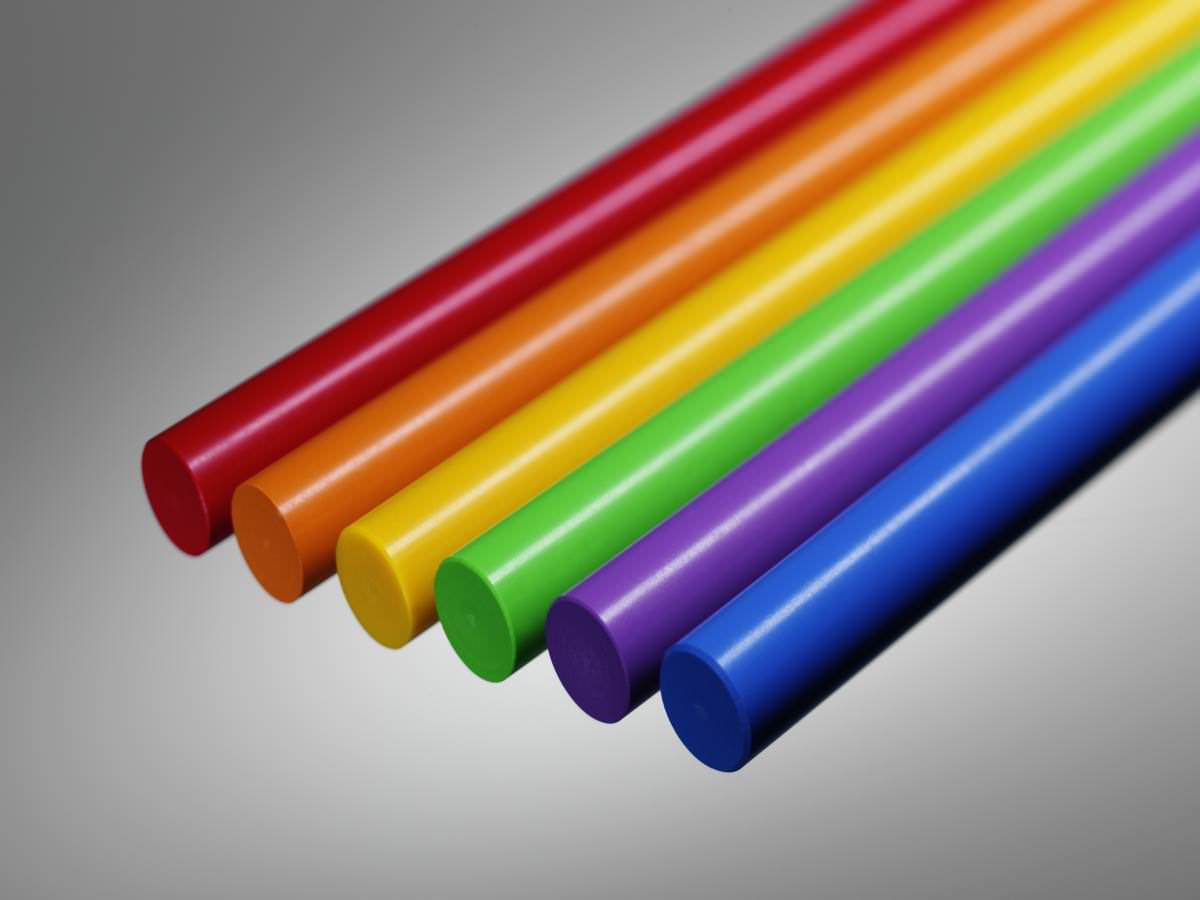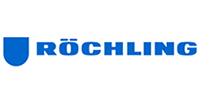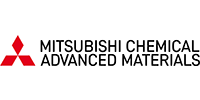Plastics Glossary of Terms
A back to top
Actuation – to put into mechanical action or motion. Amine – any of a class of organic compounds derived from ammonia by replacement of hydrogen with one or more alkyl groups. Amorphous – Latin meaning without form. Non-crystalline structure. Anneal – to prevent the formation of or remove stresses in plastics by cooling from a suitable temperature. Aramid – any of a group of lightweight by very strong heat-resistant synthetic aromatic polyamide materials that are fashioned into fibers, filaments, or sheets. Arc – 1) a luminous glow formed by the flow of electric current through ionized air, gas or vapor between separated electrodes or contacts. 2) a portion of the circumference of a circle. Arc Resistance – 1) the resistance to the flow of current offered by the voltaic arc (i.e., if the carbons of an arc lamp are 1/32″ apart, the arc resistance will be 1½ ohms). 2) the resistance of a material to the effects of an arc passing across its surface stated as a measure of the total elapsed time taken to form a conducting path (of material carbonizing by the arc flame) across the surface under prescribed conditions of applications of a high voltage, low current arc (as across an insulator). Atactic – a polymer exhibiting no stereochemical regularity of structure. AWG – abbreviation for American Wire Gauge, a standard system for designating wire diameter. back to top
Binder – the organic or inorganic material which encapsulates and holds together the base in reinforced or otherwise heterogeneous composites. Bond strength – 1) the measure of the force required to separate objects or materials bonded together. 2) the strength of the bond between fiber and matrix. 3) the degree of attraction between adjacent atoms within a molecule, usually expressed in J/mol. Breakdown – the disruptive discharge through insulation due to failure under electrostatic stress. British Thermal Unit (B.T.U.) – the quantity of heat required to raise the temperature of one pound of water 1°F from 58.5 to 59.5°F (its point of maximum density). C back to top
Capacitance – the property of an electric nonconductor that permits the storage of energy as a result of the separation of charge that occurs when opposite surfaces of the nonconductor are maintained at a difference of potential. Carbonyl – organic functional group occurring in aldehydes, ketones, carboxylic acids, esters and their derivatives. Celsius – also referred to as Centigrade, is equal to the difference between the temperature in Fahrenheit less 32 and the quantity divisible by 1.8°C = (°F – 32) ÷ 1.8. Cement – a dispersion of “solution” of unvulcanized rubber or a plastic in a volatile solution. This meaning is peculiar to plastics and rubber industries and may not be an adhesive composition. Coefficient of Friction – static: the ration of the limiting friction developed to the corresponding normal pressure if two surfaces move relative to each other. Coefficient of Thermal Expansion – the unit change in dimension of a material for a unit change in temperature. Composite – 1) a structure or an entity made up of distinct components. 2) a complex material, such as fiberglass, in which two or more distinct, structurally complementary substances, especially glasses and polymers, combine to produce structural or functional properties not present in any individual component. 3) reinforced laminates (i.e., canvas phenolic, glass epoxy, etc.). Compressive Strength – crushing a load at failure divided by the original sectional area of the specimen. Conductivity – the reciprocal of volume resistivity. It is the conductance of a unit cube of any material. Copolymer – a polymer formed through the inter-polymerization of two (or more) chemically different monomers with each other. Copper Clad Laminate – laminates (i.e., FR4) having copper foil bonded to one or both surfaces and intended primarily for use in printed circuits. Corrosion – chemical action which causes destruction of the surface of a material by oxidation or chemical combination. Also caused by reduction of the electrical efficiency between a metal and a contiguous substance or to the disintegrating effects of strong electrical currents or ground return currents in electrical systems. The latter is known as electrolytic corrosion. Crazing – minute lines appearing in or near the surface of materials such as plastics, usually resulting as a response to environment. Crazing cannot be felt by running a fingernail across it. (If the fingernail catches, it is a crack.) Creep – the dimensional change with time of a material under load. At room temperature it is also called cold flow. Cross-linking – the setting-up of chemical valence links between the molecular chains of polymer molecules, leading to the formation of a three-dimensional network of polymer chains which is infusible and insoluble. This usually reduces the thermoplasticity of the material. Crystallinity – a molecular structure resulting from the formation of solid crystals with a geometric pattern. D back to top Delamination – the separation of a laminate along the plane of its layers. Also the separation of bonded insulation within the adhesive layer or at the adhesive interface. Density – weight per unit volume of a given substance. Dielectric – 1) any insulating medium which intervenes between two conduits and permits electrostatic attraction or repulsion to take place across is. 2) a material having the property that energy required to establish an electric field is recoverable in whole or in part, as electric energy (see insulation for clarification). Dielectric Constant (Permittivity or Specific Inductive Capacity) – the specific inductive capacity of a dielectric. That property of a dielectric which determines the electrostatic energy stored per unit volume for unit potential gradient. Dielectric Strength – ability to retain precise shape and size. Dissipation – unusable or lost energy, as the production of heat in a circuit. Dissipation Factor – (loss tangent, tans, approximate power factor) – the tangent of the loss angle of the insulating material). E back to top
Epoxy Resins – straight-chain thermosetting resins containing at least one three-membered ring consisting of two carbon atoms and one oxygenation. Extrusion – the method of processing plastic by forcing heat softened plastic through an opening of the desired shape of the cross-section of the finished product. F back to top
Fahrenheit – equals 1.8 multiplied to the sum of the temperature in Celsius and °F = 1.8 x (°C + 32). Fiber – a thread or threadlike structure such as cellulose, wool, silk or glass yarn. Fibre – 1) a specific form of chemically jelled fibrous materials manufactured in sheets, rods and tubes. 2) commonly used interchangeably with fiber. Filament – 1) fiber characterized by extreme length. 2) the resistance wire through which filament current is sent in a thermionic tube to produce the heat required for electron emissions. Filament Winding – resin impregnated robbing or single strands of glass or other reinforcement wound in a pre-determined pattern onto a suitable form or mandrel and then cured. Fishpaper – 1) a type of vulcanized fibre paper treated chemically for insulating purposes where high mechanical and electrical strength and flexibility are required. 2) a vulcanized fibre in thin cross-section. Flange – a rib or rim for strength, for guiding, or for attachment to a pipe. Flash Point – the lowest temperature at which a flammable liquid will produce a combustible vapor that will burn in the presence of a flame, under certain prescribed conditions of test. Flexural Strength – the strength of a material in bending, expressed as the tensile stress of the outermost fibers of a bent test specimen at the instant of failure. Formulation – 1) a combination of ingredients before processing or made into a finished product. Also used as a synonym for a material, compound. 2) a selection of components of a product formula or mixture to provide optimum specific properties for the end-use desired. G back to top
Glass Cloth – fabric used as insulating material base formed by weaving yarns comprising glass filaments and possessing high strength, heat resistance and dielectric properties. Glass Fiber – glass in fibrous form that has cooled to a rigid condition without crystallizing. H back to top
Heat Loss – power dissipated as heat. High-Pressure Laminates (molding pressure high) – laminates molded and cured at pressures not lower than 1,000 psi. (Pressures of 1,000 to 2,500 psi are not uncommon.) I back to top
Impact Strength – ability to withstand physical shock loading or work required to fracture under shock loading a specified test specimen in a specified manner. Impregnate – 1) to fill the voids and interstices of material with a compound (this does not imply complete fill or complete coating of the surfaces by a hole-free film). 2) the process of thoroughly soaking a material of an open or porous nature with a resin. Inert – deficient in active properties; not affecting other substances when in contact with them such as inert gases not participating in any fashion in chemical reactions. Infrared – the band of light in the electromagnetic spectum that lies between the visible light range and the radar range. Insulation – material having a high resistance to the flow of electric current, to prevent leakage of current from a conductor. Insulation Resistance – the ratio of the applied voltage to the total current between two electrodes in contact with a specific conductor under prescribed conditions of test. Isomer – one of two or more compounds, radicals or ions that contain the same number of atoms of the same elements by differ in structural arrangement and properties. Isotactic – having a stereochemical regularity of structure in the repeating units of a polymer. K back to top Kelvin – the absolute temperature scale (metric). K = °C + 273. Kraft Paper – 1) relatively heavy, high strength sulfate paper used for electrical insulating material. 2) paper made from sulfate wood pulp, chiefly pinewood chips by digestion with a mixture of caustic soda. L back to top Laminate – 1) (v) – to build up to desired shape or thickness.2) (n) – a material composed of successive layers of material, usually bonded together under heat and pressure. Light Transmission – the amount of light that a plastic will allow to pass. Loss Factor – the product of the power factor and the dielectric constant of a dielectric material. Low Pressure Laminates – laminates molded and cured in the range of pressures up to 400 psi M back to top Mat – 1) a randomly distributed felt of fibers, usually glass, used in reinforced plastics. 2) a nonwoven fabric of fibrous material used as a plastic reinforcement. Mica – a transparent, flaky mineral which splits into thin sheets and has excellent insulating and heat resisting properties, consisting of orthosilicates of aluminum or potassium; occurs naturally. Moisture Resistance – the ability of a material to resist absorbing ambient moisture. Monomer – the simple, unpolymerized form of a compound which is the building block of a polymer. O back to top Ohm – practical unit of electric resistance. Ohm’s Law – the strength of a direct current is directly proportional to the potential difference and inversely proportional to the resistance of the circuit. O-ring – a ring used as a gasket. Outgassing – to remove occluded gases by heating. P back to top Permeability – 1) the passage or diffusion (or rate of passage) of a gas, vapor, liquid or solid through a barrier without physically or chemically affecting it. 2) the ability of a material to carry magnetism as compared to air which has a permeability of one. Permittivity – preferred term for dielectric constant. It is that property of a dielectic material that determined how much electrostatic energy can be stored per unit of volume when unit voltage is applied; the relative permittivity of most materials varies from 2 to 10, air having 1. Phenolic Resin – 1) a synthetic resin produced by the condensation of phenol with an aldehyde (usually formaldehyde). 2) any of several types of thermoset plastics obtained by the condensation of phenol or substituted phenols. Plastic – 1) high polymeric substances, including both natural and synthetic products, but excluding the rubbers that are capable in their manufacture of flowing under heat and pressure. 2) a material that contains an organic substance of large molecular weight, solid in finished state. Plasticizer – chemical agent added to plastics to make the softer and more flexible. Pneumatic – moved or worked by air pressure. Polymer – 1) a compound formed by the chemical union of two or more monomers of the same kind. 2) a synthetic or natural compound of high molecular weight. R back to top Reinforcement – material used to reinforce, strengthen or give dimensional stability to another material; can be chopped, woven or braided. Resin – 1) a substance that is polymeric in structure and predominantly amorphous. 2) an alternative term, like polymer, to the predominately used name of plastic. Resistance – property of a conductor that opposed the current flow produced by a given difference of potential. The ohm is the practical unit of resistance. Rockwell Hardness – a test for hardness (resistance to indentation) in which a hardened stell ball or diamond point is pressed into the material under test. S
back to top Shear Strength – 1) ability of a material to withstand shear stress or stress at which a material fails in shear. 2) the maximum shear strength stress that a material is capable of sustaining. Slurry – a watery mixture of insoluble matter. Specific Gravity – the density of any material divided by that of water at a standard temperature. Spherulites – spherical crystalline body of radiating crystal fibers. Surface Resistivity – the resistance of a material between two opposite sides of a unit square of its surface. Syndiotactic – having a stereochemical regularity where the molecules can be described in terms of alternation of configurational base units that are mirror images of one another. T back to top
Tensile Strength – the longitudinal stress required to break a prescribed specimen divided by the original cross-sectional area at the point of rupture (usually expressed in lbs. Per square inch), within the gauge boundaries sustained by the specimen during the test. Thermal Conductivity – the ability of a material to conduct heat; physical constant for quantity of heat that passes through volume of a substance in unit of time for unit difference in temperature. Thermionic – relating to, using, or being the emission of charged particles (as electrons) by an incandescent material. Thermoplastic – plastics capable of being repeatedly softened by increases in temperature and hardened by decreases in temperature. These changes are physical rather than chemical Thermoset – a classification of plastic resin that cures by chemical reaction when heated and, once cured, cannot be resoftened by heating. V back to top Volume Resistivity – resistance between opposite faces of 1 cm cube of material, usually in ohm-cms. W back to top Weir – a dam to divert water flow. |










